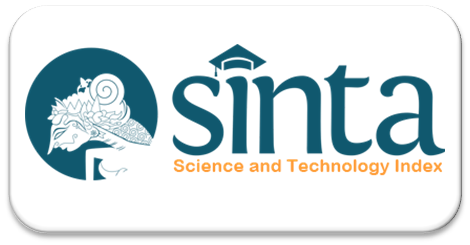The Effect of Giving Early Stimulation on Child Development Aged 12-24 Months : Systematic Review
DOI:
https://doi.org/10.35960/vm.v17i1.1391Keywords:
child development, stimulation, ToddlerAbstract
Child development is a gradual change in body function with an increasing ability to make gross and fine movements, speak, and interact with the surrounding environment. In their development, children under two years of age still often experience growth and development disorders such as motor development disorders, language and communication development disorders, intellectual development disorders, and behavioral and emotional well-being disorders. This systematic review aims to giving information about the impact of offering stimulation on the growth of children aged 12-24 months, the systematic review adhered to the PRISMA guidelines the systematic review adhered to the Preferred Reporting tems for Systematic Review and Meta-Analysis (PRISMA) guidelines by filtering the titles and abstracts of the included articles using standard Microsoft Excel formulas. Multiple databases, including PubMed and ScienceDirect, were searched using appropriate keywords. Inclusion criteria encompassed English-written studies addressing pertinent subjects, presenting complete texts, and published within a specified timeframe.2018 to 2023. Five articles were reviewed with respondents aged 0-24 months. This article contains several types various kinds of stimulation, such as social interaction with children through talking and physical contact, then providing educational toys such as disassembling toys, puzzles, and story books, then introducing music and encouraging singing, drawing, and exploring the environment, such as providing appropriate challenges. with the child's level of development which can stimulate children's critical thinking abilities and creativity. It can be concluded from this study of several article that the government has attempted to improve child development to provide good care through daily stimulation to children, which also involves health service workers in improving children's growth and development
References
Adikaram, A. (2019) ‘At their wits’ end? How divorced women cope with workplace harassment in Sri Lanka’, Gender in Management, 34(6), pp. 489–509. doi: 10.1108/GM-10-2018-0123.
Dinkes. 2021. Profil Kesehatan Jawa Timur. Surabaya.
Gaikwad, L., Taluja, Z., Kannuri, N. K., & Singh, S. (2020). Caregiver knowledge, attitude and practices about early child development in Telangana, India: a cross-sectional study. International Journal ofContempora ry Pediatrics, 7(10), 1940. https://doi.org/10.18203/23493291.ijcp20204025
Hasneli, Y., Herlina, and E. Irmilia. 2015. “Hubungan Peran Orang Tua Terhadap Perkembangan Psikososial Anak.” Jurnal Keperawatan vol 2 no 1.
Herawati, T., Zubairi B, and Dkk. 2018. “Dukungan Sosial, Interaksi Keluarga, Dan Kualitas Perkawinan Pada Keluarga Suami Istri Bekerja.” Jurnal Ilmu Keluarga & Konsumen Vol. 11, N:1–12.
Huru, Matje Meriaty, Kamilus Mamoh, and Jane Leo Mangi. 2022. “Hubungan Pengetahuan Dan Sikap Orangtua Tentang Stimulasi Perkembangan Dengan Perkembangan Anak Prasekolah.” Babul Ilmi Jurnal Ilmiah Multi Science Kesehatan 14(1). doi: 10.36729/bi.v14i1.902.
Kemenkes RI. 2016. “Pedoman Stimulasi, Deteksi Dan Intervensi Dini Tumbuh Kembang Anak.” P. 17 in. Jakarta: Kementerian Kesehatan RI.
Kertamuda. 2015. Golden Age.
Lukanga, I., & Nyanda, S. S. (2023). Effectiveness and Preferences on Mainstreaming Early Childhood Stimulation Services in Tanzania: A Case Study of Community-based Early Childhood Development Initiative. European Journal of Education and Pedagogy, 4(5), 21–30. https://doi.org/10.24018/ejedu.2023.4.5.637
Moonik, P., Hesti Lestari H, and Rocky Wilar. 2015. “Faktor-Faktor Yang Mempengaruhi Keterlambatan Perkembangan Anak Taman Kanak-Kanak.” E-CliniC 3(1). doi: 10.35790/ecl.3.1.2015.6752.
Moher, David, Alessandro Liberati, Jennifer Tetzlaff, and Douglas G. Altman. 2009. “Preferred Reporting Items for Systematic Reviews and Meta-Analyses: The PRISMA Statement.” BMJ (Online) 339(7716):332–36. doi: 10.1136/bmj.b2535.
Opel, Aftab, Syeda Sazia Zaman, Ferdousi Khanom, and Frances E. Aboud. 2008. “Effectiveness of a Community-Based Child Stimulation Program in Rural Bangladesh.” Maternal & Child Nutrition 4(4):275–86.
Riskesdas. 2018. “Hasil Utama RISKESDAS 2018.”
Shannon, Sue. 2002. “Critical Appraisal of Systematic Reviews.” Canadian Association of Radiologists Journal 53(4):195–98. doi: 10.1201/b13455-10.
Soetjiningsih. 2013. Tumbuh Kembang Anak. Jakarta: EGC.
Syafi’atur Rosyidah, and Trias Mahmudiono. 2018. “Hubungan Riwayat BBLR Dengan Pekembangan Anak Prasekolah (Usia 4-5 Tahun) Di TK Dharma Wanita III Karangbesuki Malang.” Amerta Nutrition 2(1):66–73. doi: 10.2473/amnt.v2i1.2018.66-73.
Tama, Nuke Aliyya, and Handayani Handayani. 2021. “Determinan Status Perkembangan Bayi Usia 0 – 12 Bulan.” Jurnal Mahasiswa BK An-Nur : Berbeda, Bermakna, Mulia 7(3):73. doi: 10.31602/jmbkan.v7i3.5762.
Urke, H. B., Contreras, M., & Matanda, D. J. (2018). The influence of maternal and household resources, and parental psychosocial child stimulation on early childhood development: A crosssectional study of children 36–59 months in Honduras. International Journal of Environmental Research and Public Health, 15(5). https://doi.org/10.3390/ijerph15050926
Venancio, S. I., Teixeira, J. A., de Bortoli, M. C., & Bernal, R. T. I. (2022). Factors associated with early childhood development in municipalities of Ceará, Brazil: a hierarchical model of contexts, environments, and nurturing care domains in a cross-sectional study. The Lancet Regional Health - Americas, 5, 100139. https://doi.org/10.1016/j.lana.2021.10013
WHO. 2018. World Health Statistic. Vol. 372.
WHO. n.d. From the Margins to the Mainstream Global Report on Children with Developmental Disabilities.
Downloads
Published
How to Cite
Issue
Section
License
Copyright (c) 2024 Intan Nur Laylatul Mufarrahah; Nunik Puspitasari, Irwanto

This work is licensed under a Creative Commons Attribution 4.0 International License.
Submitted paper will be firstly reviewed by the editors to determine whether the paper meet the edition theme and submission guidelines. Papers which meet the theme and the guidelines will be assigned to selected reviewers for peer-reviews. Viva Medika: Jurnal Kesehatan, Kebidanan dan Keperawatan is a double blind peer-reviewed journal which involves reviewers based on their experties relevant to the topic of the paper. Final decision of paper acceptance is solely decided by the editors according to reviewers' comment.
Plagiarism and self-plagiarism are prohibited. Viva Medika: Jurnal Kesehatan, Kebidanan dan Keperawatan uses PlagiarismCheckerX and iThenticate to scan papers for detecting plagiarism. Thus, Appropriate citation and quotation should be used

.png)








